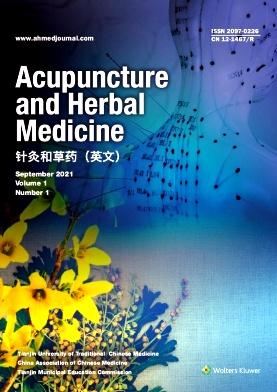Clinical Research Report on Traditional Chinese patent medicines and Traditional Chinese Classic Famous Prescriptions (2022)
引用次数: 0
Abstract
To comprehensively summarize and analyze the basic situation and methodological quality of clinical randomized controlled trials (RCTs) of Chinese and English traditional Chinese patent medicines and traditional Chinese classic famous prescriptions published in 2022, to provide evidence and reasonable suggestions for the advancement of clinical research and the formulation of policies and guidelines. The Evidence Database System of clinical evidence-based evaluation of traditional Chinese medicine was searched, and data from China National Knowledge Infrastructure (CNKI), PubMed, and other databases were supplemented. The search duration was from January 1, 2022, to December 31, 2022. RCTs of traditional Chinese patent medicines and traditional Chinese classic famous prescriptions were included as the source of clinical evidence, and published information, sample size, intervention, control measures, treatment course, methodological quality and key link report were analyzed and evaluated. A total of 1,464 RCTs of traditional Chinese patent medicines were included, which included 667 types of traditional Chinese patent medicines; "traditional Chinese patent medicines+Western medicine vs. Western medicine" was the most widely used intervention and control setting, involving 417 RCTs(28.48%). A total of 245 RCTs of traditional Chinese classic famous prescriptions were included, including 55 types of traditional Chinese classic famous prescriptions. "Decoction+ conventional treatment vs. conventional treatment" was the most widely used intervention and control setting, with 87 RCTs (35.51%). Published RCTs on traditional Chinese patent medicines and traditional Chinese classic famous prescriptions were limited by the study design and implementation. Most “allocation concealment” and “blinding of patients and personnel” were rated as medium to high risk,There are insufficient reports on key research links such as experimental registration and ethical approval. The number of RCTs on traditional Chinese patent medicines has decreased in 2022, but there has been a slight improvement in the research quality and impact. There are relatively few studies on traditional Chinese classic famous prescriptions. Measures must be taken to improve clinical trial design, implementation, and reporting. Methodological experts should be invited to provide professional technical guidance on the trial design. In the research implementation process, attention should be paid to quality control, particularly the standardization of the randomized execution.中成药和中医经典名方临床研究报告(2022 年)
全面总结和分析2022年发表的中英文中成药和中医经典名方临床随机对照试验(RCT)的基本情况和方法学质量,为推进临床研究、制定政策和指南提供证据和合理建议。 检索了中药临床循证评价证据数据库系统,并补充了中国国家知识基础设施(CNKI)、PubMed等数据库的数据。检索时间为 2022 年 1 月 1 日至 2022 年 12 月 31 日。纳入中成药和中医经典名方的 RCT 作为临床证据来源,并对其发表资料、样本量、干预措施、对照措施、疗程、方法学质量和关键环节报告进行分析和评价。 共纳入 1464 项中成药 RCT,其中包括 667 种中成药;"中成药+西药 vs. 西药 "是使用最多的干预和对照设置,涉及 417 项 RCT(28.48%)。中国传统经典名方共纳入 245 项 RCT,包括 55 种中国传统经典名方。"煎药+常规治疗 VS 常规治疗 "是使用最多的干预和对照设置,共有 87 项 RCT(35.51%)。已发表的关于传统中成药和传统中医经典名方的 RCT 受研究设计和实施的限制。大部分研究的 "分配隐藏 "和 "患者及人员盲法 "被评为中高危,对实验注册、伦理审批等关键研究环节的报道不足。 2022年中成药RCT研究数量有所减少,但研究质量和影响略有提高。对传统中医经典名方的研究相对较少。必须采取措施改进临床试验的设计、实施和报告。应邀请方法学专家对试验设计进行专业技术指导。在研究实施过程中,应注意质量控制,尤其是随机执行的规范性。
本文章由计算机程序翻译,如有差异,请以英文原文为准。
求助全文
约1分钟内获得全文
求助全文

 求助内容:
求助内容: 应助结果提醒方式:
应助结果提醒方式:


